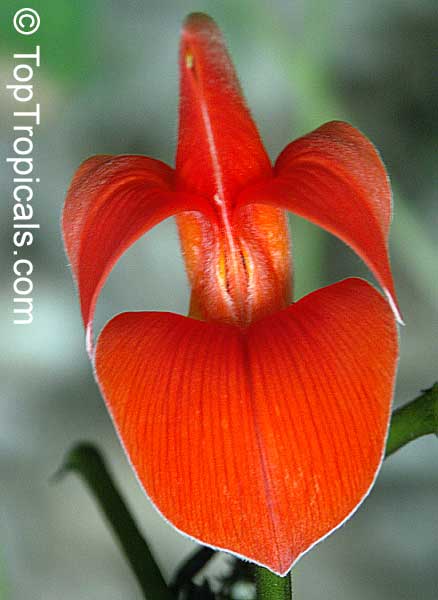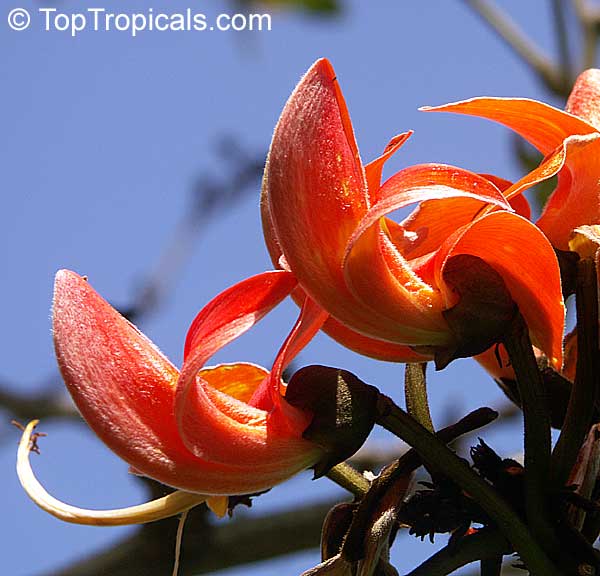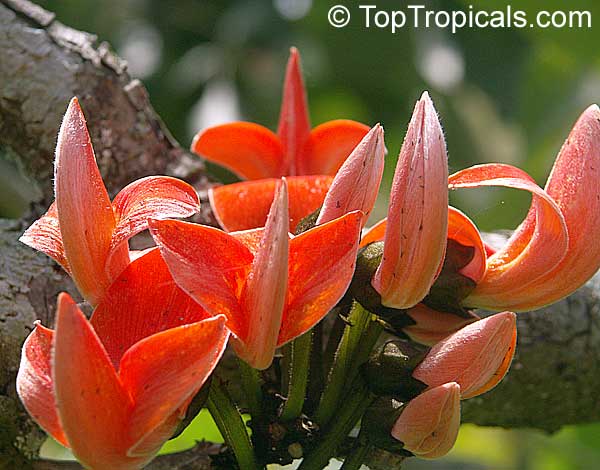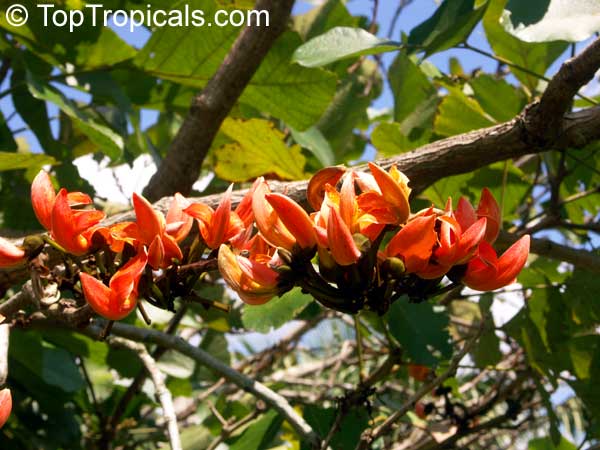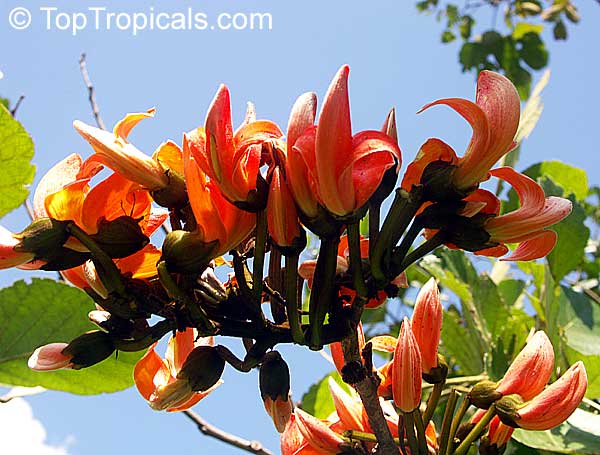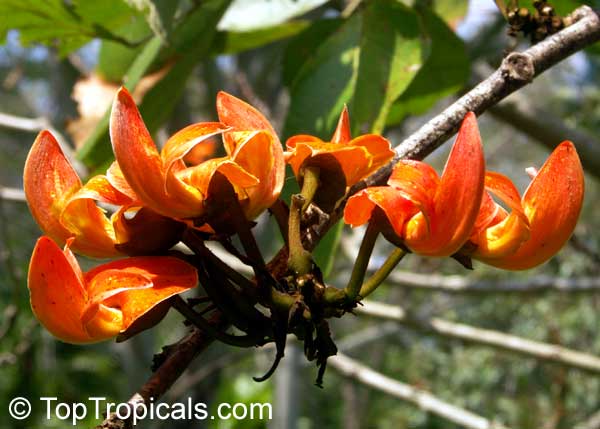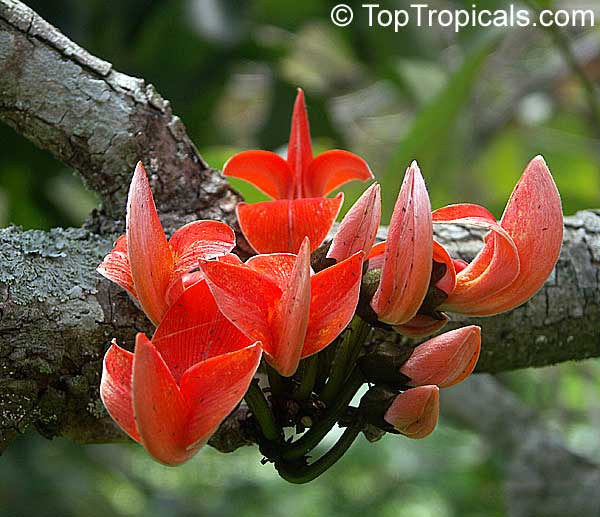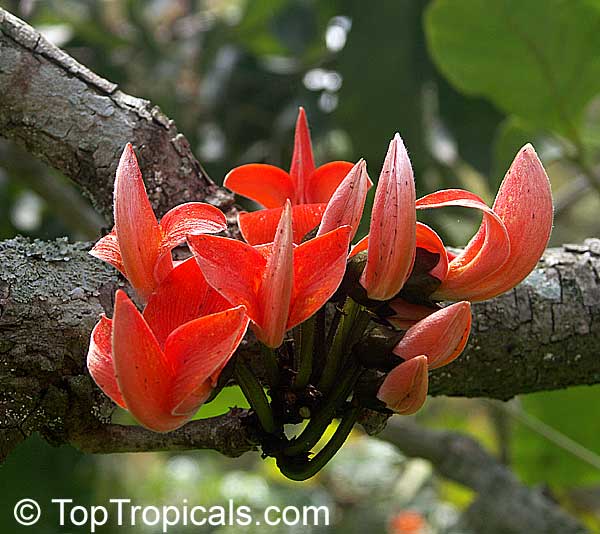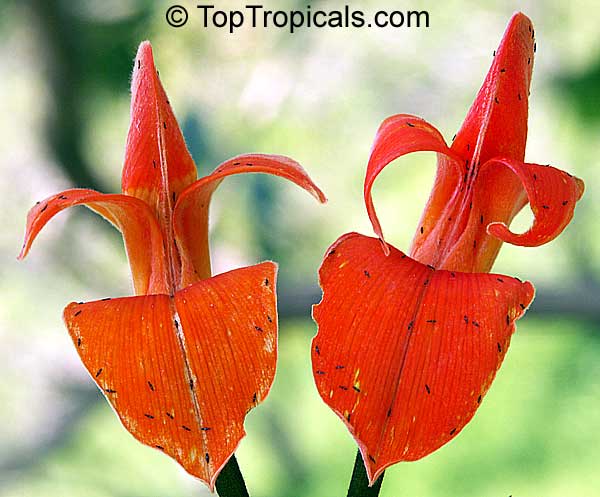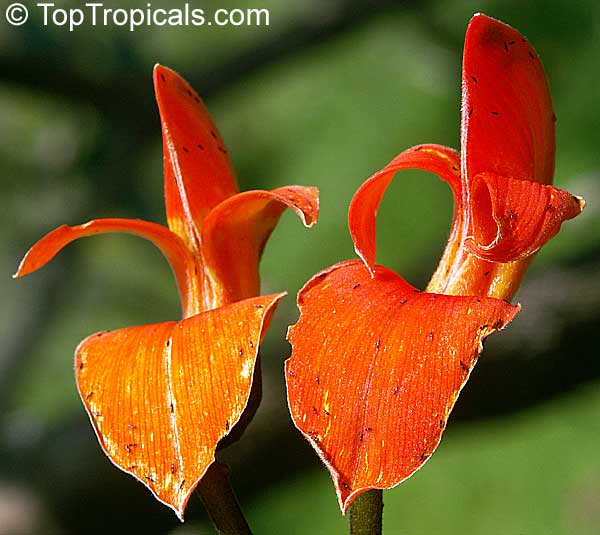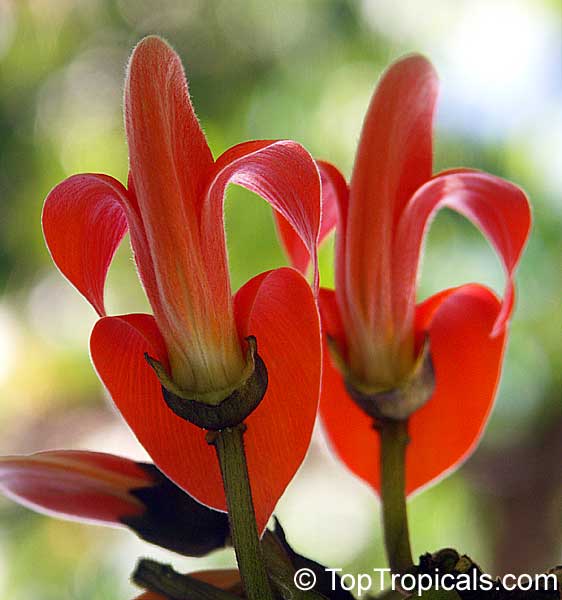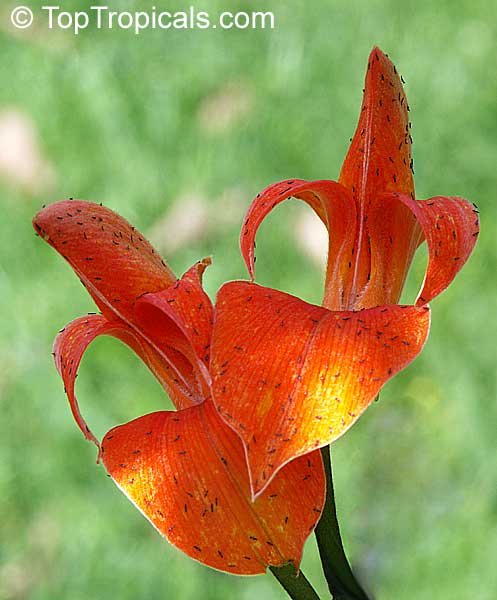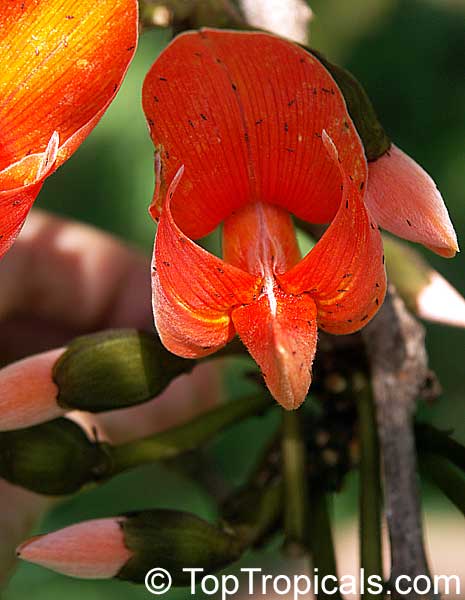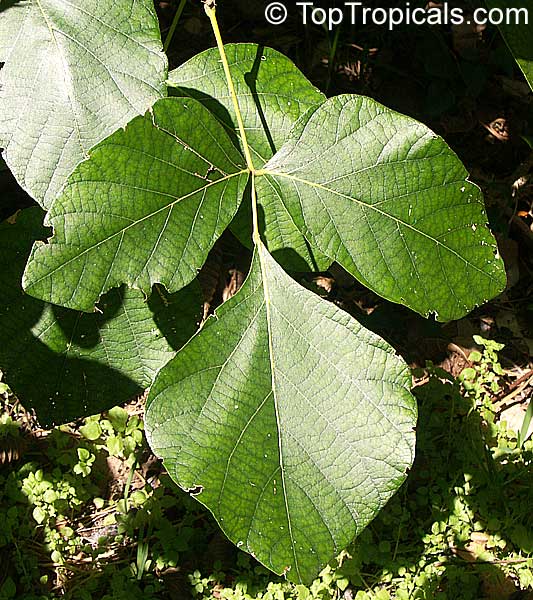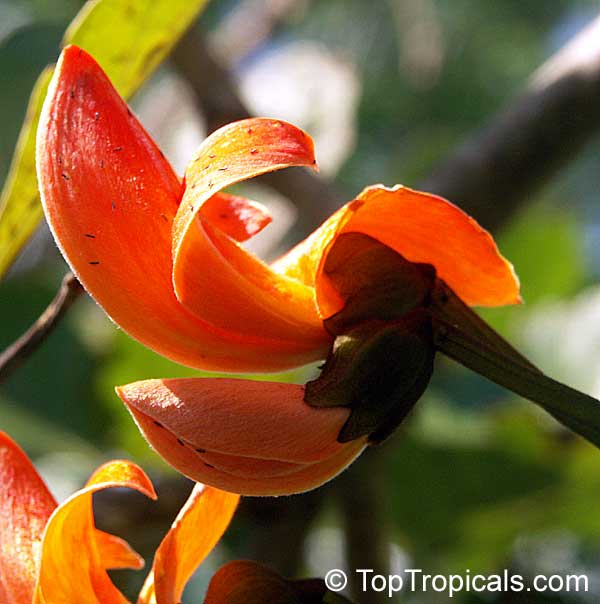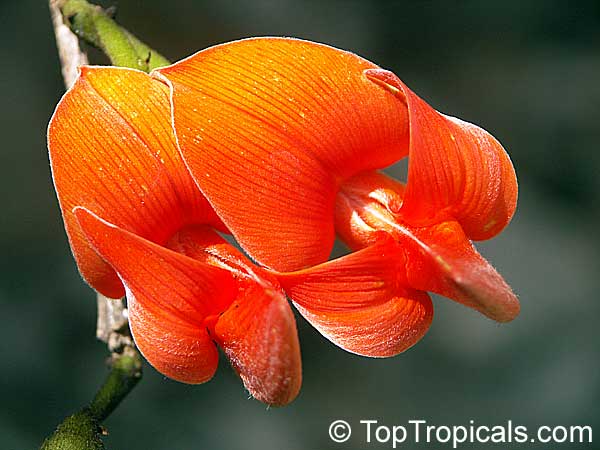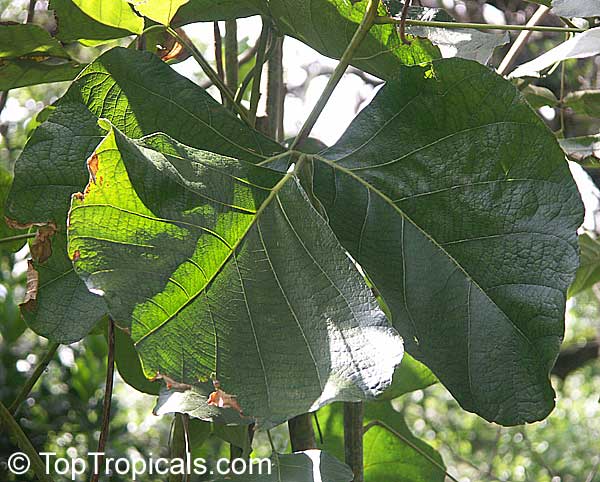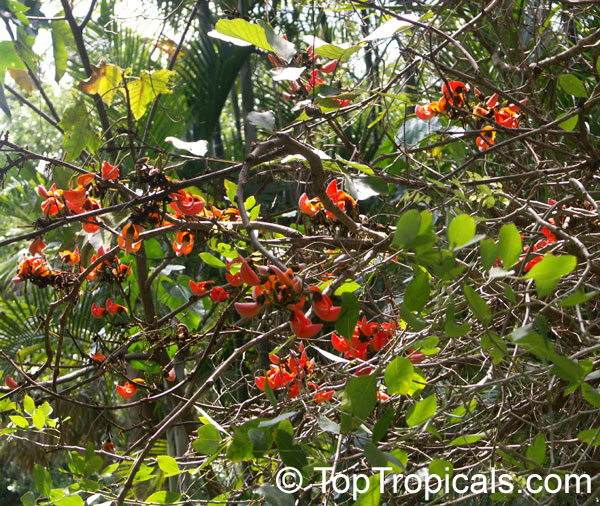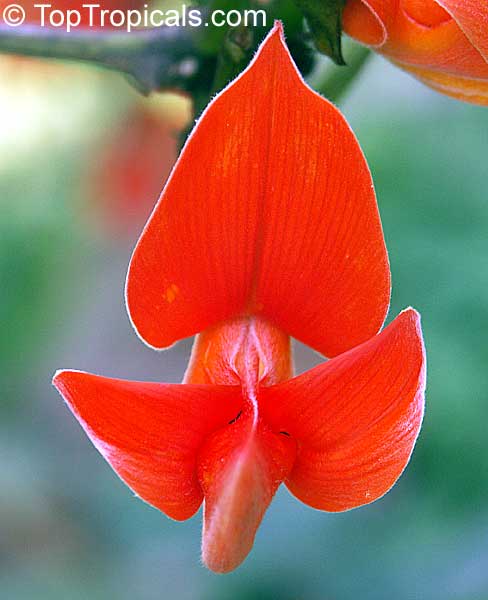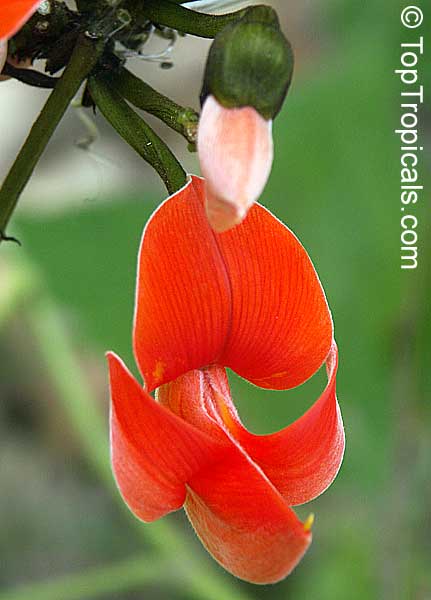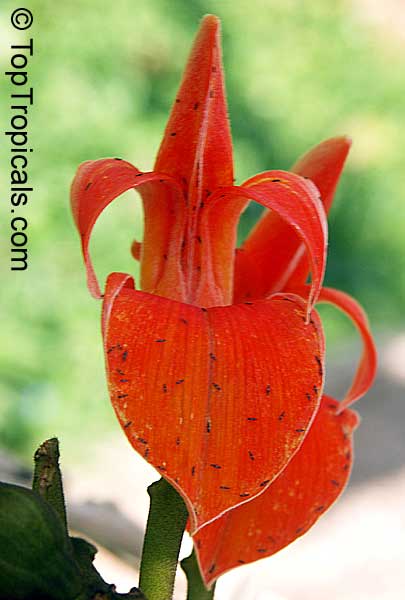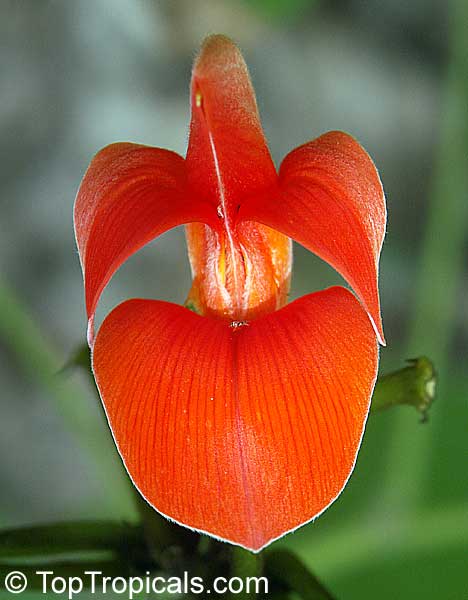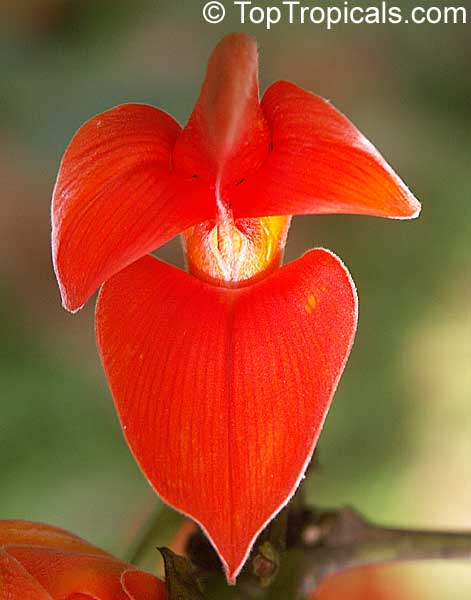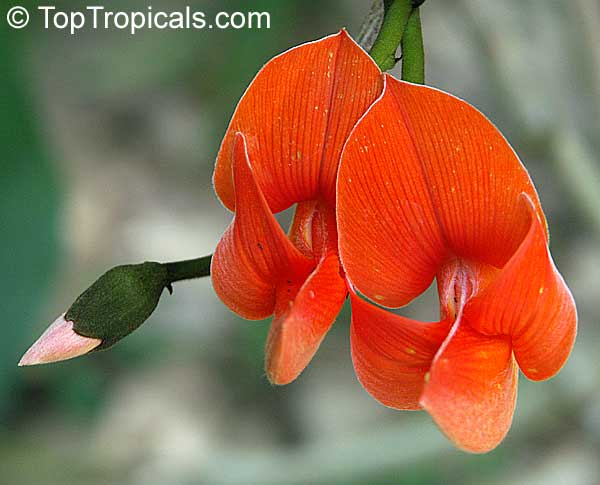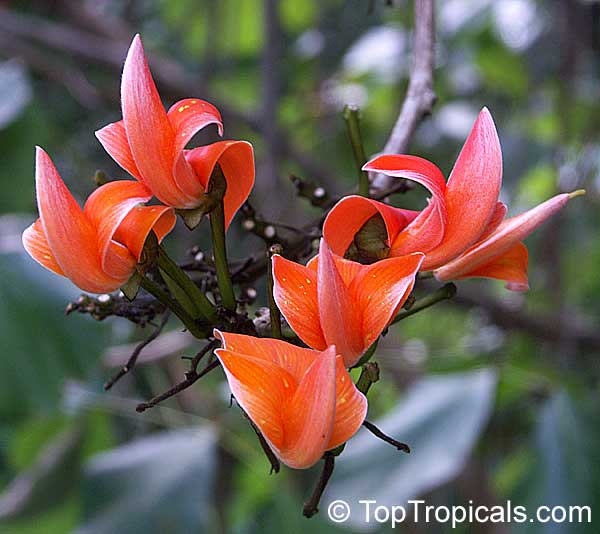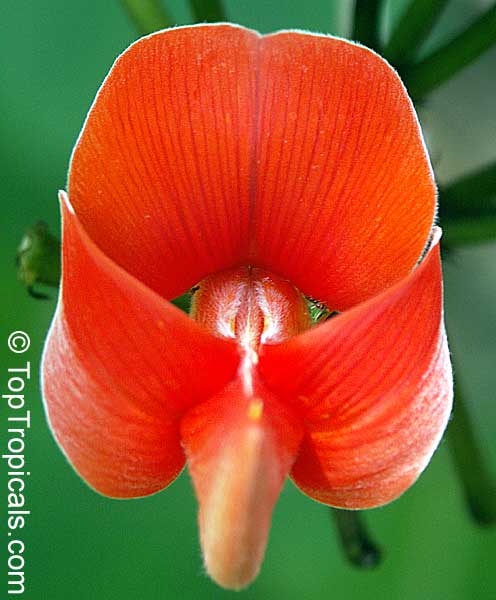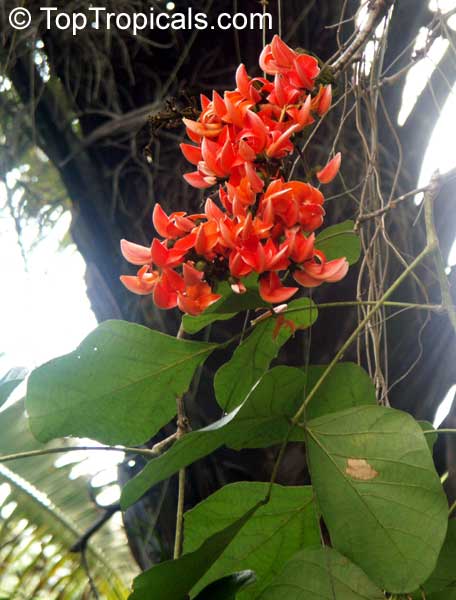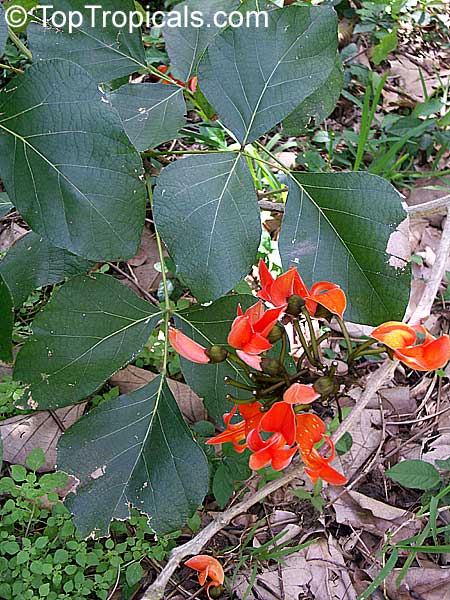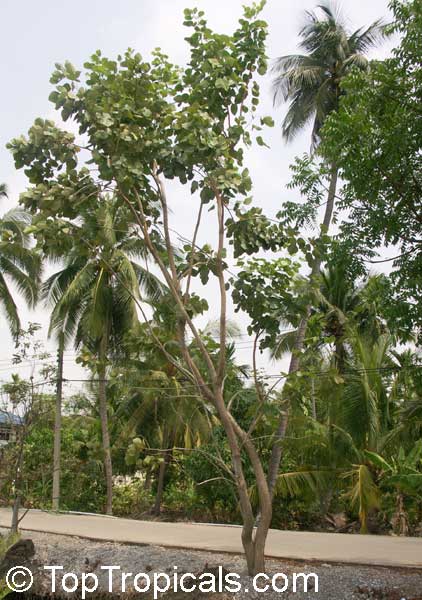Allure of the Tropics
BUTEA FRONDOSA - FLAME OF THE FOREST
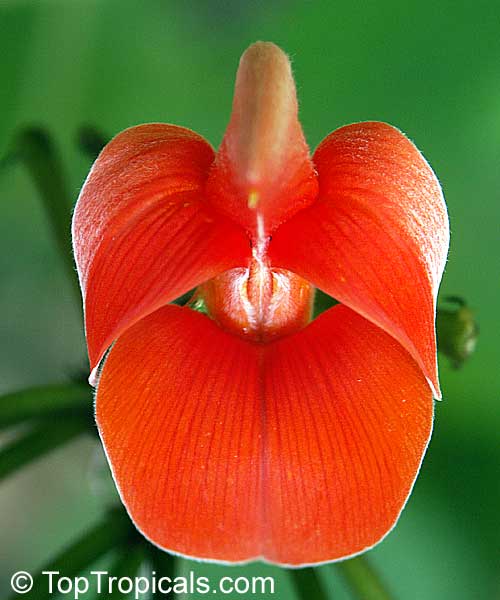 Scientific name: Butea
monosperma, Butea frondosa
Scientific name: Butea
monosperma, Butea frondosaFamily: Faboideae / Leguminosae / Papilionaceae
Common names: Flame of the Forest, Dhak, Palas, Bastard Teak, Parrot Tree, Dhak or Palas (Hindi); Porasum (Tamil) ; Khakda (Gujerati).
Origin: India

Joints of weird shapes
The Flame of the Forest is a medium sized tree, growing from 20 to 4O feet high, and the trunk is usually crooked and twisted with irregular branches and rough, grey bark. It is seen in all its ugliness in December and January when most of the leaves fall: but from January to March it truly becomes a tree of flame, a riot of orange and vermilion flowers covering the entire crown. These flowers, which are scentless, are massed along the ends of the stalks—dark velvety green like the cup-shaped calices—and the brilliance of the stiff, bright flowers is shown off to perfection by this deep, contrasting color. Each flower consists of five petals comprising one standard, two smaller wings and a very curved beak-shaped keel. It is this keel which gives it the name of Parrot Tree. The back-curving petals are covered with fine, silky hair, which, seen at certain angles, change the deep orange to a silvery salmon-pink. The buds too, have this downy growth and acquire a beautiful mauvish bloom.Twisted trunk habit
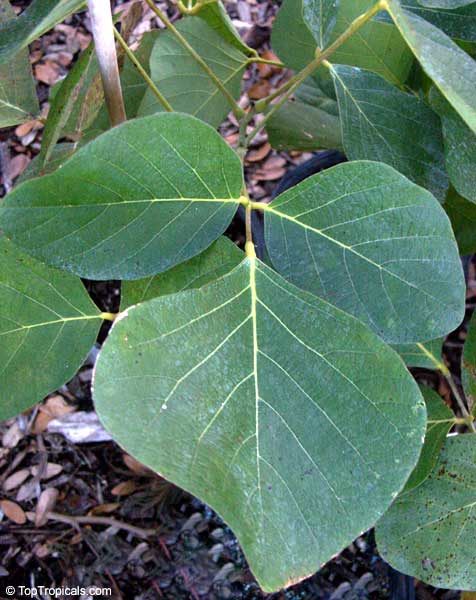
The leaves, which appear in April and May, are 10-18" wide and trifoliate. When fresh they are like soft suede ; thick, velvety and a beautiful pale, bronze green. Old leaves are as firm and tough as leather, smooth above and hairy below. This silky down gives them a silvery appearance from a distance.
The pods, when young, are pale green, are covered with a dense growth of fine hair and sometimes give the effect of a tree in full leaf. They are pendulous and 3 to 4 inches long. When ripe they become yellow-brown and contain flat, brown seeds.
That the flowers contain much nectar is evidenced by the frequent visits of many species of birds; sunbirds, mynahs and babblers are usually to be seen, hurrying from flower to flower, chattering and twittering. With man, also, the tree is very popular, having numerous uses. From an infusion of the flowers a brilliant coloring matter can be obtained, which may be made into water-paint or into a dye. Cotton, prepared with alum, can be dyed a bright yellow or orange.
rom the seeds a clear oil is obtained and the gum which exudes from the stems, known as Bengal Kino, is valuable to druggists because of its astringent qualities, and to leather workers because of its tannin. Young roots make a strong fibre which has many uses, the making of rope sandals being one of the most important. Roots, eaten raw, cause giddiness, but, baked, are eaten by Mundari children. The leaves, because of their strength, are sewn together by poor people to make plates and the lovely flowers are popular with all Indian women for adornment of their hair.
The Palas is sacred to the moon and is said to have sprung from the feather of a falcon impregnated with the Soma, the beverage of the Gods, and thus immortalised. It is used in Hindu cremonies for the blessing of calves to ensure their becoming good milkers. When a Brahmin boy becomes a Sadhu, his head is shaved and he is given a Palas leaf to eat—the trifoliate formation representing Vishnu in the middle, Brahma on the left and Shiva on the right.
A rare yellow varity of the Flame of the Forest is sometimes found
in India.
Butea Frondosa is named after the Earl of Bute, a patron of Botany and
Frondosa, meaning "leafy". It is a native of India but is
not found in the dryest parts, being most common in Central India and
the Western Ghats.


